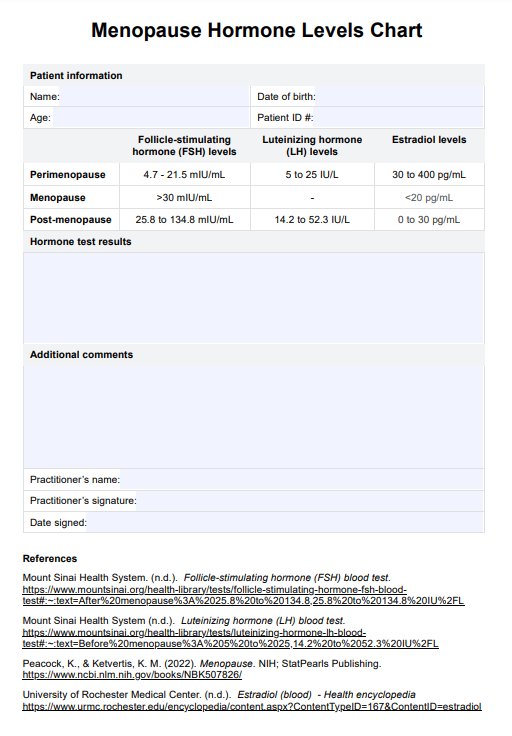Gynecologists, endocrinologists, and primary care physicians may request blood tests for hormones such as estrogen levels, follicle-stimulating hormone (FSH), luteinizing hormone (LH)for women undergoing menopause or experiencing menopause-related symptoms. Our Menopause Hormone Levels Chart can help interpret these blood tests.

Menopause Hormone Levels
Help your patients navigate the turbulent time of menopause and better understand the changes within their bodies with our Menopause Hormone Levels Chart.
Menopause Hormone Levels Template
Commonly asked questions
Menopause Hormone Levels Charts are used during the perimenopausal, menopausal, and postmenopausal stages to track fluctuations in estradiol ,follicle-stimulating hormone (FSH), luteinizing hormone (LH) levels. They aid in assessing hormonal changes and guiding treatment decisions, such as starting HRT.
Healthcare professionals can use this chart to monitor and interpret trends in hormone levels over time, helping to diagnose menopause, tailor hormone replacement therapy, and manage symptoms for targeted, personalized patient care.
EHR and practice management software
Get started for free
*No credit card required
Free
$0/usd
Unlimited clients
Telehealth
1GB of storage
Client portal text
Automated billing and online payments











